Do you have a question about the Oregon Scientific WMR112A and is the answer not in the manual?
Lists the items included in the original WMR112A package and optional accessories.
Step-by-step guide for installing or replacing batteries in the thermo-hygrometer.
Instructions for installing batteries and mounting the baro-thermo-hygrometer.
Guide for setting up the main unit, including power connection and battery backup.
Description of the buttons and display windows on the main unit.
Steps to initiate the main unit's operation and signal reception.
Explanation of low-battery indicators for the main unit and remote sensors.
Procedure for manually setting the calendar clock and display preferences.
Information on automatic synchronization with the U.S. Atomic Clock signal.
Explanation of the weather forecast icons and their meanings.
Steps to set a daily alarm, including time and activation.
Procedure to turn off the daily alarm function.
How to choose between different units for displaying barometric pressure.
How to view the barometric pressure history for the past 24 hours.
Procedure for setting the sea-level pressure value.
How to select display units for indoor temperature and dew point.
How to display maximum, minimum, and current indoor temperatures.
Steps to clear the stored maximum and minimum temperature data.
How to display maximum, minimum, and current indoor humidity readings.
Procedure to clear the stored maximum and minimum humidity data.
How to select readings from the outdoor sensor or specific channels.
How to choose between Celsius and Fahrenheit for temperature display.
How to display maximum, minimum, and current outdoor temperatures.
Steps to clear the stored maximum and minimum outdoor temperature data.
How to select humidity readings from the outdoor sensor or specific channels.
How to display maximum, minimum, and current outdoor humidity readings.
Steps to clear the stored maximum and minimum outdoor humidity data.
Instructions for enabling and using the auto scanning feature for sensors.
Guide for setting various weather alarms like temperature, humidity, and pressure.
How to stop an active alarm and deactivate the alarm function.
Steps to take if the main unit loses connection with sensors.
Procedure for resetting the main unit and weather instruments to default settings.
Guidelines for cleaning and maintaining the weather station unit.
Technical specifications for temperature, humidity, and pressure measurements.
Physical dimensions, weight, and power requirements for the units.
Details on compliance with FCC rules and potential interference issues.
Recommended steps to resolve radio or television reception interference.
Information on how to contact customer support for assistance.
Information regarding the product's warranty period and coverage.
| Brand | Oregon Scientific |
|---|---|
| Model | WMR112A |
| Category | Weather Station |
| Type | Wireless |
| Wireless Transmission | Yes |
| Wireless Range | 100 m |
| Rainfall Measurement | Yes |
| Display Type | LCD |
| Power Source | Batteries |
| Power (Base Station) | 3 x AA batteries |
| Power (Remote Sensor) | 2 x AA batteries |
| Dimensions (Base Station) | 150 x 100 x 30 mm |
| Transmission Frequency | 433 MHz |
| Outdoor Temperature Range | -40 to 60 °C |
| Indoor Temperature Range | 0 to 50 °C |
| Humidity Range | 20% to 95% |



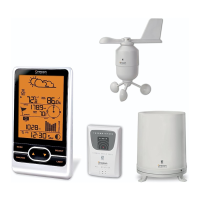
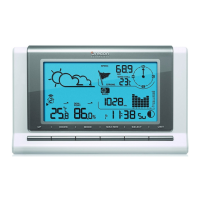
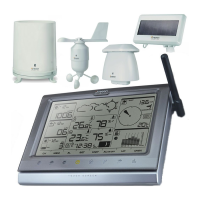
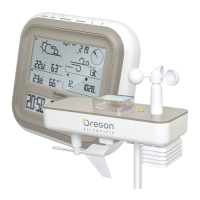

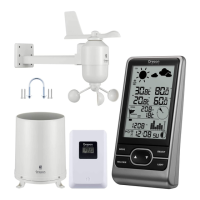


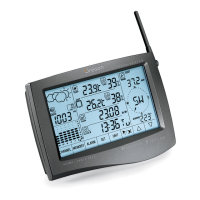
